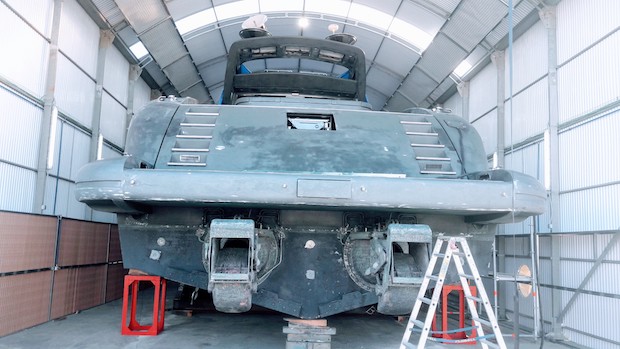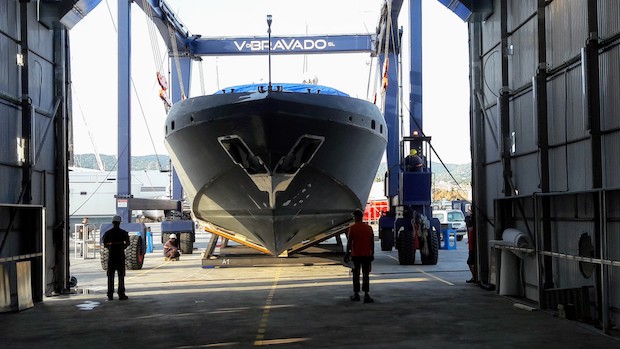ANTIFOULING PAINT, WHAT IS IT FOR?

Paint for the hull of the ship is one of the most important elements of its maintenance. Within these cares, we must pay special attention to the incrustations in the helmet. These can be of three types: silts, algae and animal-type encrustations. To prevent them, the annual application of paint for the hull of the antifouling boat is important. Today, with the help of V de Bravado, the best boathouse in Barcelona, we will see what antifouling paint is and what it is for.

Antifouling paint for the hull of the ship, what is it
Antifouling paint is a special coating that normally contains a combination of bioactive ingredients and water-soluble organostannic compounds. After being applied to the hull of the boat slows down the appearance of silt, seaweed, barnacles and other marine organisms that adhere to the hull during navigation.
The application of this paint to the hull of the special boat brings the following advantages:
It acts as a barrier against corrosion in metal helmets.
It improves the flow of water around the hull and, therefore, the speed and overall performance of the boats.
It avoids greater fuel consumption and added costs due to damage to the propellers, blocking of the water inlets and outlets of the engine and other damages to the surface of the hull, due to marine growth.

Types of antifouling
Since January 1, 2003, it is forbidden that antifouling paints contain metals such as tin, lead, copper or any other pollutant according to the IMO (International Maritime Organization) to which the countries of the European Union belong, in addition from other countries like Japan, USA, Canada, Australia or New Zealand. For this reason, antifouling paints have lost part of their effectiveness but, in return, they have gained in environmental conservation.
Today these paintings of ships in the sea contain biocidal substances, much less polluting, that prevent organisms from being installed in the living work. Upon contact with water, these substances are released forming a protective halo around the perimeter of the boat. The main difference between the different types of antifouling lies in the way of releasing this toxic load.
Self-polishing autofouling
They are the most modern, the most expensive and those that offer a longer period of protection. They are formed by a mixture of resins and biocides in a soluble matrix that erodes regularly and chemically self-regulates when the biocide is released, also leaving a smooth surface in contact with water. Therefore they are the best hydrodynamic qualities they provide.
Hard matrix autofouling
They are characterized by a mixture of insoluble resins and soluble resins. Biocides are released through the insoluble and porous paint film or matrix. The paint absorbs water while the soluble part of the resin disintegrates, leaving an insoluble structure like a rigid sponge, filled with water, through which the biocidal products that are the ones that actually act are dissolved by diffusion. to repel the scale.

Antifouling in V de Bravado
To perform the antifouling it is better to leave it in the hands of professionals. It is a meticulous process that must be carried out in the right place with the necessary guarantees. The operator must wear nose and mouth protection elements, since the particles that are released during the sanding process are potentially toxic and can seriously affect the respiratory tract.
UnaAn excellent option is to rely on the V-boat of V de Bravado.
This post is also available in:
 Español
Español
